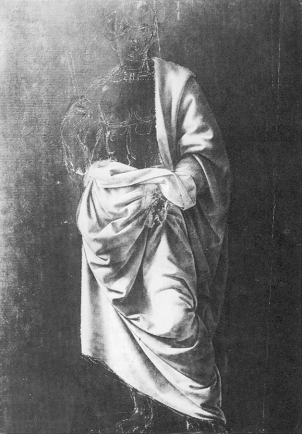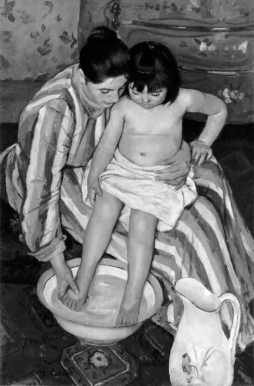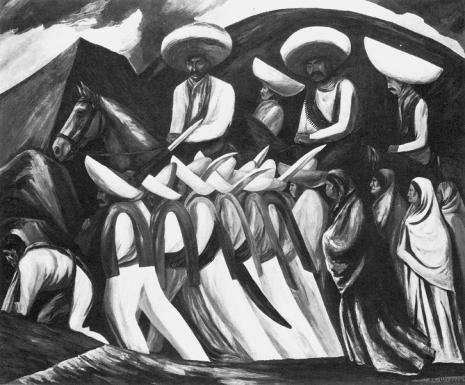Study Guide
Field 095: Visual Arts Education
Sample Multiple-Choice Questions
Expand All Answers | Collapse All Answers
Subarea 1—CREATING VISUAL ART
Objective 001
Understand tools, materials, processes, and techniques used in drawing, painting, graphic design, and other two-dimensional media.
1. Which of the following is an important rule for art classroom safety?
- Stand paintbrushes in containers with bristles pointed upright.
- Refrain from eating while working with all materials.
- Replace caps on all tubes tightly.
- Store paints and solvents in separate areas.
- Enter to expand or collapse answer.Answer expanded
- Correct Response: B.
Objective 002
Understand tools, materials, processes, and techniques used in the two-dimensional media of printmaking and photography.
2. In black and white photography, dodging is most often used during the printing process to:
- darken an area by adding exposure.
- deepen an area by using toner fluid.
- lighten an area by reducing exposure.
- brighten an area by using reducer fluid.
- Enter to expand or collapse answer.Answer expanded
- Correct Response: C.
Objective 004
Understand tools, materials, processes, and techniques used in ceramics, fibers, and metalwork.
3. In the creation of silver jewelry, the technique of embossing, or repoussé, is a process in which:
- a piece of silver is worked from the back to create a design in relief on the front.
- thin strips of silver are applied to the surface of a piece of silver, and enamel is applied between the strips.
- the front of a piece of silver is hammered to create a design on the surface.
- molten silver is poured into a mold, replacing a thin layer of wax and taking the shape of the mold.
- Enter to expand or collapse answer.Answer expanded
- Correct Response: A.
Objective 005
Understand tools, materials, processes, and techniques used in contemporary and emerging visual art forms (e.g., performance art, electronic imaging, videography, film).
4. Which of the following is a significant characteristic of contemporary performance art works?
- The works are refined over time through repetition.
- The performances are usually achieved with the elaborate use of props and costumes.
- The works are presented to live audiences in real time.
- The performers are usually separated from the audience by physical or spatial barriers.
- Enter to expand or collapse answer.Answer expanded
- Correct Response: C.
Objective 006
Understand methods of visual arts presentation.
5. The tradition of exhibiting art of indigenous cultures in museums has been criticized by some curators and critics as inappropriate primarily because this practice:
- prevents the viewer from experiencing the works' tactile qualities.
- effectively assigns equal value to every work of art within and across exhibitions.
- tends to exaggerate the importance of natural irregularities and technical flaws in the works.
- presents the works in isolation from the contexts for which they were created.
- Enter to expand or collapse answer.Answer expanded
- Correct Response: D.
Objective 007
Demonstrate knowledge of how organizational structures are used in creating visual art.
6. Use the reproduction below of Drapery for a Standing Man, Represented Frontally by Lorenzo di Credi to answer the question that follows.

The drawing shows the sketched form of a man with a detailed, shaded drawing of a white draped garment covering his left arm and shoulder and the lower half of his body. He holds the cloth bunched in his left hand, creating swooping folds over his right hip and lower leg, and there are also radiating folds over his shoulder, arm, and left hip.
Which of the following contributes most to the sense of volume in this drawing?
- direction of line
- gradations in value
- quality of edge
- contrast in shapes
- Enter to expand or collapse answer.Answer expanded
- Correct Response: B.
Objective 008
Understand artistic processes involved in creating works of art.
7. In which of the following situations would it be most beneficial to have sketchbooks filled with frequent or daily entries?
- beginning a new work of art and needing visual ideas with which to begin
- teaching a course on drawing and instructing students on work methods
- applying for gallery representation and working to gain the favor of the director
- exhibiting current work in a show and accompanying it with past images
- Enter to expand or collapse answer.Answer expanded
- Correct Response: A.
Subarea 2—AESTHETIC KNOWLEDGE AND CRITICAL ANALYSIS OF ART
Objective 009
Understand the visual arts as a form of communication.
8. Use the reproduction below of a frieze from twelfth-century India to answer the question that follows.

The frieze is stone, with nine dancing figures. Each of the figures wears an ornamental skirt, pointed headdress, and pointed shoes. Each figure is posed with the torso curved, one arm raised, the other bent at the elbow, one leg bent with the knee high, and the other knee bent and supporting the body. The 4 left figures are posed in a mirror image of the 4 right figures. The central figure is slightly more prominent than the rest.
Which of the following features in this frieze is used to express the feeling of rhythm and movement?
- flattening of space with attention to detail
- repetition of form with an undulating line
- asymmetrical balance with emphasis on the axis
- narrow value range with an enclosing border
- Enter to expand or collapse answer.Answer expanded
- Correct Response: B.
Objective 010
Understand the role of visual arts in society and the community.
9. To have one's art work shown in a juried exhibit, an artist must typically:
- have previously received awards for or official public recognition of his or her work.
- have had his or her work accepted into the exhibit as the result of a formal judging process.
- have served as a juror for an exhibit in which his or her own works were not included.
- have created a body of work specifically designed to be included in the exhibit.
- Enter to expand or collapse answer.Answer expanded
- Correct Response: B.
Objective 011
Understand the effects of culture and gender on visual art.
10. Use the reproduction of The Bath by Mary Cassatt below to answer the question that follows.

The reproduction is of an oil painting that shows a woman in a long-sleeved, ankle-length striped dress, sitting on the floor with a child of about 3 or 4 on her lap. A towel is wrapped around the child's hips, and the child's feet are in a porcelain basin of water, where the mother is washing them with one hand. Both mother and child look down at the child's feet. The view is from somewhat above, as would be seen by a standing observer. The background objects—a patterned rug, floral wallpaper, a dresser with a floral design on the drawers, and a porcelain pitcher with a floral design on the side—are painted with loose brushstrokes.
The composition of this American painting most strongly reflects the influence of the art of:
- Japan.
- Islam.
- India.
- Eastern Europe.
- Enter to expand or collapse answer.Answer expanded
- Correct Response: A.
Objective 012
Understand the basic components of media literacy.
11. "Kitsch" is the term for a type of art that is generally produced by mass media for commercial purposes. Which of the following is a common criticism of kitsch?
- Art created for commercial purposes cannot be considered a valid representation of a culture's values.
- Audiences tend to misunderstand the cultural references incorporated into works of kitsch.
- Works of kitsch tend to address subjects in trivial ways and fail to challenge the viewer.
- The artists who create kitsch are untrained in the classical techniques and traditions of art.
- Enter to expand or collapse answer.Answer expanded
- Correct Response: C.
Objective 014
Understand the basic principles of analysis, interpretation, and evaluation of works in visual art.
12. Read the excerpt below from an ARTnews, March 2002, review of a Frank Stella exhibit to answer the question that follows.
In a short blurb headed "Frankly Awful," Peter Scheldahl of the New Yorker dismissed Stella's recent show of painted reliefs at Paul Kasmin Gallery as "shriekingly ugly congeries of tortured aluminum" that "could wake the dead and make them want to be dead again."
The New York Times's Roberta Smith came to Stella's defense, praising his "relentless, maybe desperate ambition," and called the show at Kasmin "really good." But her overall view was cautious: "His work is unruly, unpredictable, his place in history out of focus, even up for grabs. . . ."
Stella offered an unruffled Freudian spin on the heated responses to his work. "This clearly doesn't have much to do with me," he said, when reached by ARTnews. "It all has to do with the viewer."
Which of the following is a principle of art criticism exemplified by this excerpt?
- Passionate but disparate responses from art critics reduce the artist's standing in the art community.
- Gender plays a significant role in one's response to art and influences an art critic's final analysis of a work.
- The only art criticism that has validity and can be trusted is that which stands the test of time.
- While art critics possess a wide base of knowledge, they are also subjective in their reactions to particular works.
- Enter to expand or collapse answer.Answer expanded
- Correct Response: D.
Subarea 3—ART IN HISTORICAL AND CULTURAL CONTEXT
Objective 015
Understand works of art from Africa from ancient times through the present.
13. The Zulu people of South Africa commonly use which form to symbolize traditional cultural values?
- carved wooden masks
- beaded jewelry
- cast brass figures
- appliquéd cloth
- Enter to expand or collapse answer.Answer expanded
- Correct Response: B.
Objective 017
Understand works of art from Europe from ancient times through the present.
14. French Rococco was a stylistic response to the Baroque that is primarily characterized by the use of:
- repeated patterns, broken color, and blurred edges.
- dense colors, geometric lines, and classical form.
- bright colors, soft light, and curved lines.
- somber tones, hard edges, and limited palette.
- Enter to expand or collapse answer.Answer expanded
- Correct Response: C.
Objective 018
Understand visual art from North America from ancient times through European contact.
15. Which of the following is an art form that is indigenous to North America?
- hand-blown glass
- photography
- sand painting
- lost-wax sculpture
- Enter to expand or collapse answer.Answer expanded
- Correct Response: C.
Objective 019
Understand visual art from North America from European contact through the present.
16. Use the reproduction below of Zapatistas by José Clemente Orozco to answer the question that follows.

The painting portrays 4 men on horseback, with 7 men and 4 women on foot, one behind the other, between the horsemen and the viewer. Another man appears to be on his hands and knees going up a slight slope in front of the people on foot. All of the men, except the one on his hands and knees, wear white sombreros, and all of them wear white shirts and pants with dark cloths hung over their shoulders. The women wear long skirts and garments draped over their heads and upper bodies. Some of the men on foot carry guns with bright bayonets. The background is starkly mountainous.
This work is representative of Mexican muralists' interests in expressing:
- cultural affirmation.
- social criticism.
- self-exploration.
- religious sentiment.
- Enter to expand or collapse answer.Answer expanded
- Correct Response: B.
Objective 020
Understand works of art from South America from ancient times through the present.
17. A distinguishing characteristic of the architecture of the Imperial Inca culture in Peru is the use of:
- wood as a construction material.
- ornamentation on structures' surfaces.
- conformity to the landscape.
- dry-masonry construction techniques.
- Enter to expand or collapse answer.Answer expanded
- Correct Response: D.
Subarea 4—ART EDUCATION
Objective 021
Understand the foundations of art education.
18. Recent innovations in the way art education is presented to elementary and secondary students are based on which of the following rationales?
- Learning experiences in the arts foster students' cognitive development in unique and essential ways.
- Opportunities to explore and master art techniques help students develop the self-discipline necessary for success.
- Learning to express ideas through visual art enhances students' communication skills in general.
- Developing the ability to create art enables students to make their everyday environments aesthetically pleasing.
- Enter to expand or collapse answer.Answer expanded
- Correct Response: A.
Objective 022
Understand artistic development in students.
19. Young children do not generally try to name the first scribbles they produce because they typically:
- view their art work as abstract and meaningless.
- lack the vocabulary to describe what they have drawn.
- draw mainly to explore visual-motor experiences.
- are not yet familiar with the custom of naming artworks.
- Enter to expand or collapse answer.Answer expanded
- Correct Response: C.
Objective 023
Understand the selection and use of curricula, strategies, and materials for art education.
20. Hands-on application of basic color theory is one objective of the first-grade art curriculum. The best medium for achieving this objective with this age group would be:
- colored paper.
- tempera paint.
- oil pastels.
- conte crayons.
- Enter to expand or collapse answer.Answer expanded
- Correct Response: B.
Acknowledgements
Lorenzo de Credi (1458–1537) Draperie: Saint Barthelemy. Louvre, Paris, France. Photo Credit: Erich Lessing/ Art Resource, NY.
Lower register of a pediment: Nine dancing apsaras. End of 12th–beginning of 13th CE. Angkorian epoch, Bayon style. Musee des Arts Asiatiques-Guimet, Paris, France. Copyright © Reunion des Musees Nationaux/ Art Resource, NY.
Mary Cassatt, American, 1844–1926, The Child's Bath, 1893, oil on canvas, 39 1/2 x 26 in., Robert A. Waller fund, 1910.2, reproduction, The Art Institute of Chicago. Reprinted with permission.
Landi, Ann. "Stella!" As appears in ARTtalk. March 2002. Vol. 101, No. 3. New York: ARTnews. Ann Landi is a contributing editor of ARTnews.
© Clemente V. Orozco. Reprinted with permission.